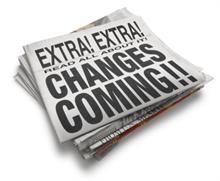
Why small and meaningful is as good as (or better than) grand and glorious
When there is recognition of the need for change in an organisation, a team or by an individual, part of that realisation involves thinking about the distance between the situation now and the situation in its changed state: Where you are and where you want to be.
The distance can sometimes be kind of depressing to look at. Thinking about all the work, effort and time to get there can be overwhelming, and even off-putting. Where do you start?
A few years ago I was introduced to the concept of Kaizen, a word which translates from Japanese as (roughly) ‘change for the better’ or ‘good change’. The concept in practice is about performing small, continuous improvement activities frequently, which can then add up to significant improvements over time. It’s a simple premise, really – to be the tortoise and not the hare.
But that is not even the most elegant thing about it: Kaizen is about putting ‘good change’ at the heart of every daily activity. It is about change as a way of being, not just as a destination. Be the water as well as the boat; be the field as well as the players, etc.
But enough grasshopper-isms: what does the Kaizen philosophy look like as a practice?
Kaizen offers quick rewards
A Kaizen change is selected to be small and do-able. It needs to be close range, short-term, easy to implement and with an obvious yield. It should complement, not compete with broader strategic goals.
For example, say a company wants to improve their profile with clients. A broad strategy might be to strengthen company branding in products and packaging. This means new design, printing, possibly a change to production practices. While these things are getting done, a Kaizen improvement might be to standardise the email signature that all staff use. This could be achieved by sending one email to all staff (with instructions and the new signature), and over the coming weeks, checking it has been implemented. This small improvement may not actively shift brand perception, but it will communicate a consistent brand message to clients, which is a factor in brand strength.
Kaizen does not replace strategic change or negate large change projects, it is a way of seeing and reaching the low hanging fruit, which when picked regularly makes a pretty delicious pie.
Kaizen is agile and cheap
Due to its size and nature, a Kaizen activity is especially manoeuvrable, adaptable and portable. An idea can be developed, implemented and tested small scale, and then improved and adapted somewhere else; propagated and re-planted.
Say a team is struggling to meet deadlines, and regardless of how many meetings they have to discuss it, the issue doesn’t improve. A Kaizen approach might be to make a single, specific change at a time, and test the impact of the change on performance. If the issue seems to be team cohesion, this might involve holding daily team stand-ups to discuss issues and goals for the day, or for distributed teams a daily Skype conference.
This small change (which takes 5 minutes out of everyone’s usual day) might show that two team members are underperforming, it might bring to light obstacles that otherwise go unnoticed or it might just create better team accountability. Either way, trying a strategy such as this has fairly low overheads and could yield good results. It may also have unexpected benefits in a team, which makes it an even more successful Kaizen activity.
Small changes can have big impacts in teams, and you can use this ripple effect to transport improvements to other teams.
Kaizen is about quality of change
Kaizen is about working toward doing whatever you do in the best possible way. ‘Best’ in this case means most efficient, least wasteful, most reliable, usable and repeatable. It is less about making incremental progress toward one giant change goal, than it is making good quality, accumulative changes that can stand alone.
It is human to want to make things better for ourselves and this extends from making our homes more ‘liveable’ (whatever our interpretation of that is) to making our jobs easier. Quality changes naturally arise from satisfying this innate desire. And innovation arises from being empowered to improve things.
So if your people don’t see the value in a huge strategic change, empower them to make small improvements that support the whole. If change is your aim, make quality your infrastructure.
Kaizen can change behaviour
At the heart of all change is an actual beating heart: a person or people. Engaging people in change activities and altering long-standing behaviours can be one of the hardest parts of achieving any strategic goal. This is particularly so when some people are chameleons for whom change is natural and others change at the same pace as a glacier melts. Oddly, Kaizen suits both kinds of people.
For the glaciers, Kaizen is sensible, careful and proportionate change. It is not overwhelmingly large, distant or demanding. For the chameleon, Kaizen is immediate, agile, fast, visible and ends in lots of high-fives. This makes it a very inclusive practice that empowers everyone, from CEO to mail clerk, to make a meaningful contribution to organisational improvement. And it does this by harnessing our innate human need to change our environment to make things easier for ourselves.
Kaizen is a way effecting change both mindfully and a bit stealthily. Every small brick counts when you are building a house, and so does the quality of the mortar. But enough from grasshopper.






